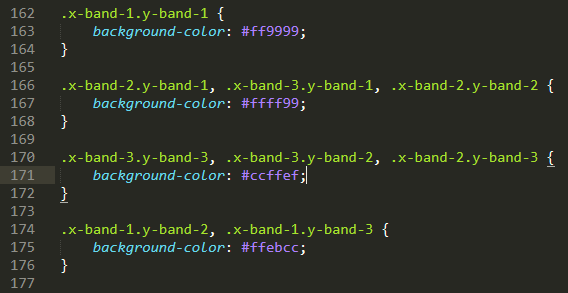talent grid
Popular HR tool - Customisable - Open Source
Download the files from the linked GitHub repo.
Include the JS files in the head or footer of your html file.
Give an element the class "talentgrid". It will be rendered as a Talent Grid, with the associated functionality.
This is set up in index.html and talentgrid-test.js so it should work out of the box.
This plugin has been tested on jQuery versions 1.11.1 and 1.12.4
The settings are documented in talentgrid-test.js
These allow you to:
To change the colours used in the grid, change the following CSS rules:

The following enhancements may be developed in a future release.
The 9-box Talent Grid is one of the most widely used talent management / succession planning frameworks.
Commercial software is available to meet this need, such as here, here and here
This is a flexible and easy-to-use Open Source implementation.
A Twitter search for the nine box talent grid reveals mixed opinions.
There are many endorsements for this method of employee appraisal.
Several recent articles express a more critical attitude. This could be a testament to its popularity. For new alternative methods of evaluation, this is "the one to beat".
Common criticisms are that:
It is easy to see how this framework could lend itself to practitioners committing the "fundamental attribution error".
We are much more likely to explain other peoples' behaviour in terms of fundamental traits rather than happenstance.
If a judgement is made on how much potential an employee *has*, then we will be tempted to see this as an essential part of who they are. If we are thinking about ourselves we will be more aware of the situations we were in and how these influenced our behaviour.
The way in which an evaluation is presented makes a large difference.
In a study, a group of five year olds were told that a girl named Rose often ate carrots. Half of the group was also told that Rose was "a carrot-eater". This latter group was much more likely to predict that Rose would continue to eat carrots in the future (even when given other evidence to the contrary).
This highlights a risk of using the framework.
If you have any suggestions please get in touch at joe.sc.cape@gmail.com